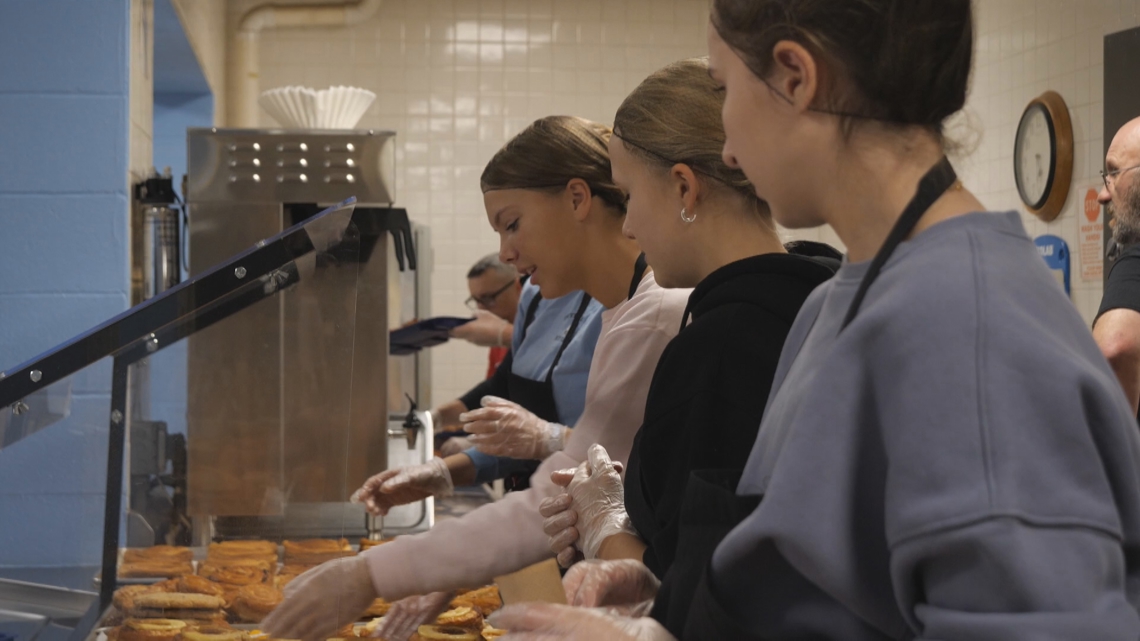CBS News
China’s space station gets new crew as Beijing advances President Xi’s “space dream”

Three Chinese astronauts including the country’s only woman spaceflight engineer entered the Tiangong space station Wednesday morning following an early morning launch into orbit.
The Shenzhou-19 mission took off with its trio of space explorers from the Jiuquan Satellite Launch Center in northwest China, state news agency Xinhua and state broadcaster CCTV reported.
Among the crew is Wang Haoze, 34, the spaceflight engineer, according to the China Manned Space Agency (CMSA). She is the third Chinese woman to take part in a crewed mission.
ADEK BERRY / AFP via Getty Images
The crew met with the astronauts from the previous Shenzhou-18 mission, “starting a new round of in-orbit crew handover,” Xinhua said.
The new Tiangong team will carry out experiments with an eye toward the space program’s goal of placing astronauts on the Moon by 2030 and eventually constructing a lunar base.
The space agency deemed the launch a “complete success,” Xinhua said, noting that the spaceship separated from the rocket it was on and entered its designated orbit about 10 minutes after taking off.
Xinhua later said the spaceship had “made a fast, automated rendezvous and docking with the front port of the space station’s core module Tianhe.”
The team will return to Earth in late April or early May next year, CMSA Deputy Director Lin Xiqiang said at a press event ahead of the launch. The current crew is scheduled to return to Earth on November 4. They’ve been on the space station for six months.
China’s ambitious space goals
China has ramped up plans to achieve its “space dream” under President Xi Jinping.
It constructed a space station after being kept out of the International Space Station, largely due to U.S. concerns over the Chinese Communist Party’s military arm’s overall control over the space program, The Associated Press points out, adding that Beijing’s moon program is part of a growing rivalry with the U.S. and others, Japan and India among them.
China was the third nation to put humans in orbit and has landed robotic rovers on Mars and the moon.
Crewed by teams of three astronauts that are rotated every six months, the Tiangong space station is the program’s crown jewel.
Beijing says it’s on track to send a crewed mission to the Moon by 2030, where it intends to construct a base on the lunar surface.
Only the U.S. has landed a crewed spacecraft on the moon so far.
One experiment the Shenzhou-19 crew’s time aboard Tiangong is scheduled to carry out involves “bricks” made from components imitating lunar soil, CCTV reported.
These items — to be delivered to Tiangong by the Tianzhou-8 cargo ship in November — will be tested to see how they fare in extreme radiation, gravity, temperature and other conditions.
Due to the high cost of transporting materials into space, Chinese scientists hope to be able to use lunar soil for the construction of the future base, CCTV reported.
The Shenzhou-19 mission is primarily about “accumulating additional experience,” Jonathan McDowell, an astronomer at the Harvard-Smithsonian Center for Astrophysics, told Agence France-Presse.
While this particular crew’s six-month stint aboard Tiangong may not witness major breakthroughs or feats, it is still “very valuable to do,” said McDowell.
China has in recent decades injected billions of dollars into developing an advanced space program on par with those of the United States and Europe.
In 2019, China landed a probe on the far side of the moon, making it the first spacecraft ever to do so. In 2021, it landed a small robot on Mars.
Tiangong, whose core module launched in 2021, is planned to be in use for about 10 years.
CBS News
Stowaway caught after getting aboard Delta flight from New York City to Paris

A stowaway somehow made it onto a Delta Air Lines flight Tuesday from New York City to Paris without a boarding pass, officials confirmed.
The woman boarded Delta Flight No. 264 from John F. Kennedy International Airport to Paris Charles de Gaulle Airport, CBS News learned. She was discovered while the plane was in midair and was taken into custody in Paris.
In a social media video posted by a passenger, the captain can be heard over the plane’s intercom — after the plane landed in Paris — telling flyers that “we’re just waiting for the police to come on board, they may be here now, and they’ve directed us to keep everyone on the airplane until we sort out the extra passenger that’s on the plane.”
The circumstances of how she was found were unclear, and her name was not immediately released.
A Transportation Security Administration source told CBS News that the woman went through an advanced imaging technology body scanner at a checkpoint in JFK Airport after somehow bypassing the document and ID check portion of the TSA process.
In a statement provided to CBS News, a TSA spokesperson said that it could “confirm that an individual without a boarding pass completed the airport security screening without any prohibited items. The individual bypassed two identity verification and boarding status stations and was able to board the aircraft.”
In order to be present at an airline departure gate for boarding, an individual must have cleared a TSA security checkpoint.
After getting through TSA security, it’s unclear how exactly the woman boarded the Boeing 767-400ER without showing a boarding pass or passport to Delta staff.
“Nothing is of greater importance than matters of safety and security,” Delta said in a statement. “That’s why Delta is conducting an exhaustive investigation of what may have occurred and will work collaboratively with other aviation stakeholders and law enforcement to that end.”
French law enforcement and the TSA are separately investigating. The woman could be subject to a civil penalty or fine for bypassing the document check process.
There is new technology known as e-gates that are being rolled out at airports which involves using biometrics to check travel documents as part of the international departure boarding process. Such technology would have caught the stowaway.
CBS News
What do we know about the violent threats against Trump’s administration picks

Watch CBS News
Be the first to know
Get browser notifications for breaking news, live events, and exclusive reporting.
CBS News
New Orleans community hoping to find escaped rescue dog before Thanksgiving

Watch CBS News
Be the first to know
Get browser notifications for breaking news, live events, and exclusive reporting.











